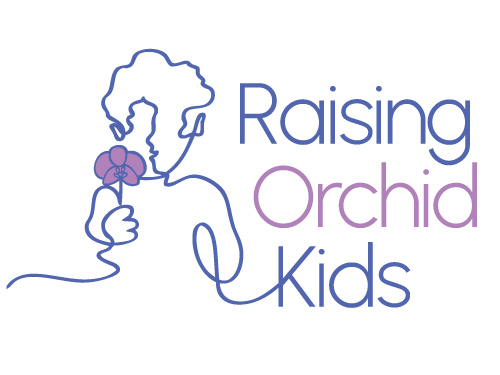So convenient, no mess, ready at a moment’s notice for hangry toddlers, pouches seem to be parents’ answer to all the snack time woes.
But…
A dark underside lurks beneath the extreme convenience of the pouch. (Cue spooky music)
To understand what it is, let’s go all the way back to the very beginning of what’s expected in infant feeding.
When babies are born, they arrive with some early reflexes that allow them to root (turn toward the breast or bottle), suckle (draw liquid into their mouths) and then swallow. This is a really good thing – it’s the difference between survival and death at its most basic level.
The act of suckling is performed with the tongue against the roof of the mouth, which puts pressure on the breast or bottle and draws the liquid out. By the time the liquid comes out of the nipple, it’s basically in the throat already, and this triggers the swallow reflex.
This is FANTASTIC for babies. They get calories delivered to their digestive tract in a low-stress, low-mess way for maximum impact for their rapidly growing bodies and brains.
But, as children grow, they’re meant to mature out of those primitive reflex patterns that are present at birth. Their brains are meant to lose those reflexes and replace them with motor patterns that will be more adaptive and healthy for the growing child (and eventual adult). How does that happen? Through new experiences.
At some point in the first year, babies will become interested in Real Food. Whatever you’re eating, they’ll want. Whatever’s close by, they’ll try and mouth it. We want this to happen! It signals that Baby’s system is ready for some adventure regarding taste, smell and texture.
And so, if everything is going as expected, it’s a time when we want to be giving babies table food of all kinds.
It’s also a time when we want to remind ourselves that THEY’VE NEVER DONE THIS BEFORE. So, it will take a while for some kids to get the hang of the whole eating thing.
They will make a mess.
They will grimace.
They will choke and cough.
They will cry.
They will snort and get food up their noses.
And all that is expected. It’s part of the process*.
(*Note: if choking, snorting and crying are increasing, not decreasing, then it’s time to visit an occupational therapist or speech therapist with feeding expertise sooner rather than later.)
So, we’ve got the experiential level outlined here, but let’s take a look at what else happens when humans eat solid food.
It turns out that what and how we eat plays a part in how our bones grow.
Not only that, what and how we eat plays a role in how well we’re able to breathe.
Not only that, what and how we eat plays a role in our overall oral, digestive and physical health.
Wait! How? Why? What?!
Here’s the digest version (and if you want a detailed account, read the fabulous book, Breath by James Nestor):
In the same way that we know that resistance training strengthens other bones in our bodies, food that must be chewed (think whole foods like meat and veggies) provides resistance to the bones of the jaw, which strengthens and helps form them.
And, because the roof of the mouth is the floor of the nose, when we have well-formed jaws, we also have better-formed airways.
But, if our bodies never experience that resistance training, none of that happens. And the long-term negative health effects are pretty astounding. Again, read the book for a full account, but some of the negative effects from not providing the body with Food that Must be Chewed are:
Poor sleep (resulting from poor breathing) and a host of problems related to poor sleep, including: behavior problems, attention problems, mood problems.
And that brings us back to pouches.
We would never deliberately keep a toddler on a pure milk diet. And yet, when we feed kids a lot of pouches, that’s essentially what we’re doing. Keeping them in a holding pattern where they can’t grow into the next version of themselves. (from a feeding AND an independence perspective.)
A pouch is not food. It is a calorie delivery system that bypasses all of the skills that growing children need to have to develop strong and positive physical and emotional experiences with food.
So what’s a parent to do? Here are some ideas.
- If you know your child ISN’T wed to the pouch, just take them away and substitute with actual food. A whole apple or carrot to gnaw on, a cut up pear, some berries – these are some whole food options that will help your child develop patterns around food that will serve them long term.
- If your child IS wed to the pouch, go slow! They didn’t learn about pouches overnight and they won’t unlearn overnight either.
- Teach your child to use a straw inserted into the pouch. This helps develop a “true suck” (in which the lips and cheeks create suction, rather than the tongue) and allows your child to actually experience the puree in their mouth.
- Put the contents of the pouch into a bowl and let kiddo have at it with a spoon!
- Wean slowly by removing one pouch per week until they’re eliminated.
- Keep pouches for special occasions like airplane flights, car rides of over 2 hours and camping trips.
- No pouches while moving in the stroller. Period. If it’s snack time, pull over and snack.
- If your child is experiencing extreme difficulty with eating and insists on sticking to a very narrow repertoire of food types, tastes and textures (including pouches and very soft foods), contact a feeding specialist immediately. It’s important to get help sooner rather than later.

